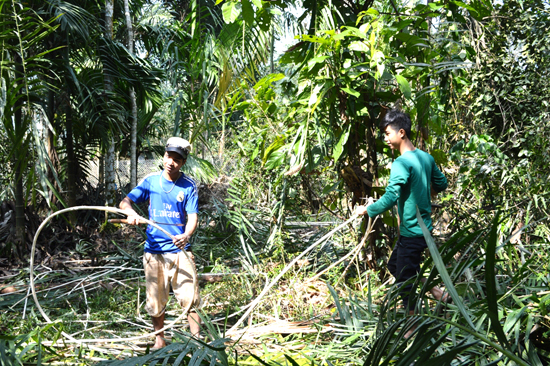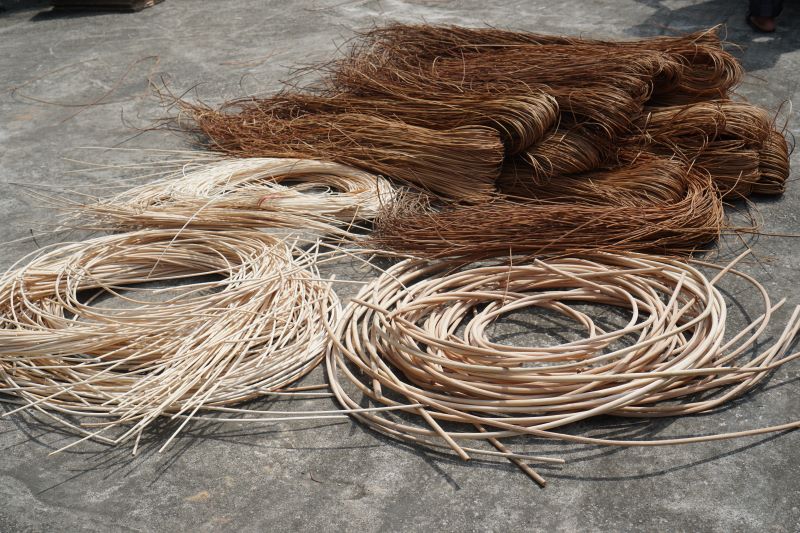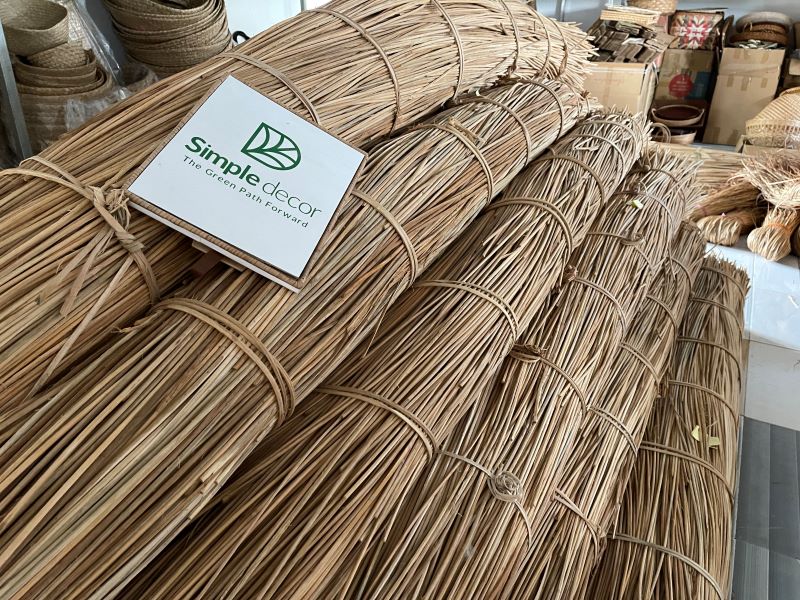1. Harvesting
 The first step in rattan processing is harvesting. This is labor-intensive and is typically carried out by people of craft villages, who do harvesting with other local farmers helping out. To watch the farmers cut and strip the rattan of its thorny outer layer is fairly amazing.
The first step in rattan processing is harvesting. This is labor-intensive and is typically carried out by people of craft villages, who do harvesting with other local farmers helping out. To watch the farmers cut and strip the rattan of its thorny outer layer is fairly amazing.
Farmers climb the trees, get out their machetes and then start hacking away – only it’s not really hacking. It requires great skill to first cut and then, with a secondary blow, split off the outer layer and peel out the core rattan.
When the rattan has been harvested from the forest, it has to be prepared before it can be used in weaving and production. They need to wash the rattan to remove any stains and clean the material, stripping away the layer of silica that tends to coat the core rattan.
2. Curving

The second step is to cure the rattan, turning its color from a pale green into the yellow that most people are familiar with in many furniture or home decor items from rattan. The raw, washed rattan is loaded into what looks like a wood-framed tent that has its floor about a foot off the ground.
Many “bushels” of raw rattan are piled on top of one another until the wooden frame is full. The frame is then covered with tarpaulin, which is secured to the ground using stone weights.
The sulfur is ignited and placed under the tent, and the smoking process begins. It usually takes about a day or more to complete this curing and smoking process.
Read more: 3 Reasons Why You Should Work With Vietnamese Handicraft Suppliers
3. Drying

The final phase in rattan processing is drying, the rattan has to be dried to remove excess moisture and make the product suitable for final usage. This process occurs outdoor surrounding under the hot equatorial sun and takes two or three days to finish.
When the drying process is done, the rattan is ready for production. It can further be processed into peel for weaving, or core products that are flexible and used for binding and craft materials.
Around 60% of the rattan goes into the furniture, the majority of which is located in South Asia such as Vietnamese handicraft suppliers.
Read more: 3 Ways to Deliver Rattan Home Decor to Your Customers
To Wrap Up
Not only a supplier, Simple Decor strives to be your partner and build up your business. Providing you with Vietnamese handicraft industry insights, including the ones you might have missed.
- Confidentiality and transparency in the right operations to ensure each of our clients remains a long-term partner.
- Industry experience in product development and consumer insights.
- We grow with our clients, not from our clients.
If you have any questions about our Vietnamese Rattan Products for wholesale or Our Solutions, please contact us here.
Join us on The Green Path Forward.

Newest Blog
Embrace Nature’s Glow by Coconut Husk Candle Holders
Mar
A day of Shared insights and Collaborative opportunities with Oklahoma University’s MBA cohort
Jan
Prime Minister of the Netherlands, Sustainability, the Vietnam-Netherlands Connection and Meeting with Simple Decor
Nov
Commitment to Support the Local Artisans at Simple Decor
Oct
The Art of Coconut Bowl Production: From Nature to Tabletop
Aug
Empowering Women at Simple Decor: A meeting with the Director-General of the World Trade Organization (WTO)
Jun
Exploring Vietnamese Business Landscape: A Visit from MBA group -The University of Texas McCombs School of Business
May
Simple Decor has successfully completed the “Ready to Export” by Dutch Export Support Program
Apr